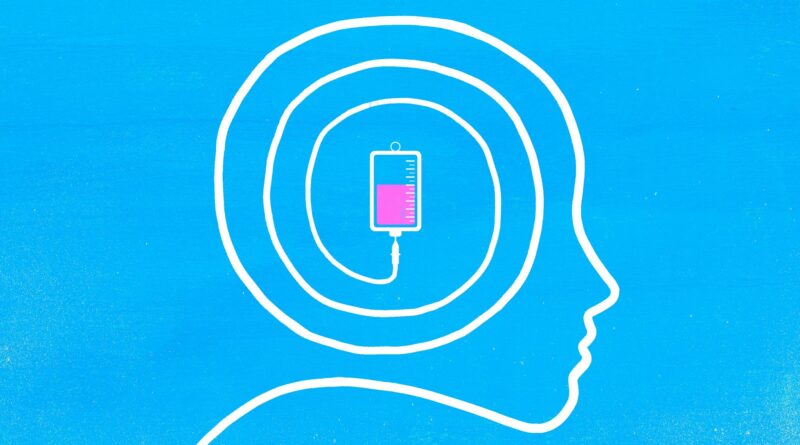15 Things You Should Know About Two New Alzheimer’s Drugs
For the first time in history, doctors who care for people with Alzheimer’s disease have access to two drugs that may be able to slow the progression of the disease modestly – at least in some patients.
The two drugs — Leqembi (lecanemab) and Kisunla (donanemab) — “are revolutionary,” says Paul E. Schulz, MD, professor of neurology and director of the Center for Neurocognitive Disorders at McGovern Medical Center at UTHealth Houston. “They give the first impression that we are on the right track, which gives us great confidence that we can continue to improve things and improve outcomes.”
One day, drugs – or their next generation – could prevent cognitive decline entirely in people whose brains are showing signs of death, but who don’t yet have symptoms, predicts formerly Andrew Budson, MD, chief of behavioral psychiatry, VA Boston and professor of education. Neurology at Boston University. “These drugs are a huge success for patients today, but more patients tomorrow,” he says.
Even with all the excitement and potential, there are serious concerns when it comes to this medicine. Side effects can occur and can be dangerous – even fatal. In addition, drugs are expensive, with list prices higher than $25,000 per year.
It’s no wonder that people newly diagnosed with Alzheimer’s disease may have questions. Those with certain risk factors are told, “talk to your doctor.” But do most doctors have the answers?
Schulz, one of the researchers who studied Kisunla in clinical trials, says: “In my experience, many neurologists have not had the opportunity to learn about this aspect of treatment. “All we are in the process of learning now.”
AARP interviewed six leading Alzheimer’s experts to get answers to 15 questions about new Alzheimer’s drugs.
Alzheimer’s disease It is the most common form of dementia, affecting an estimated 6.9 million Americans over age 65, according to 2020 data from the Centers for Disease Control and Prevention. The disease is characterized by progressive memory loss, personality changes and eventually the inability to perform normal daily activities, such as bathing and dressing and paying bills.
1. How do these two drugs work?
Leqembi and Kisunla are antibodies that bind to the amyloid protein in Alzheimer’s plaque. Those plaques are made of natural proteins that build up in the brain and cause problems. Most antibodies in the body are made by our immune system to fight infections from viruses or bacteria, but these two are produced in a laboratory. When an antibody attaches to an amyloid molecule, the immune system is alerted to destroy the amyloid, removing it from the brain and potentially reducing the disease.
2. How do the drugs differ from existing Alzheimer’s drugs?
Some Alzheimer’s drugs help reduce symptoms of Alzheimer’s disease such as memory loss and confusion by changing brain chemicals. They are given as pills. Both drugs are given intravenously.
3. How are they different from each other?
The plaque binds to small amyloid molecules called “amyloid protofibrils.” Kisunla binds to the amyloid plaques themselves. “Whether these different binding targets are important is not clear,” Budson says. The injection is administered every 2 weeks for 18 months, then every 4 weeks after that, Budson says, adding, “There are no clear guidelines on how When do you stop, if it’s not going to happen.” Kisunla is given every four weeks until the amyloid is cleared – as measured by a scan. If the PET scan shows low levels of amyloid, treatment is stopped.
4. What are the side effects? Are they serious?
There may be a drug reaction with flu-like symptoms, such as chills, shortness of breath, and rash, usually mild and treatable with acetaminophen and antihistamines, such as Benadryl, to says Jason Karlawish, MD, professor of geriatrics. University of Pennsylvania’s Perelman School of Medicine and director of the Penn Memory Center. However, more than that is when amyloid-related imaging abnormalities, known as ARIA, occur, which may involve brain swelling or bleeding or both. “ARIA can be simple, moderate or powerful,” says Budson. When severe, it can be serious and life-threatening.
Although patients taking Kisunla experienced more ARIA than those taking Leqembi, the researchers point out that the two drugs were not compared to each other in the studies. Also, “donanemab [Kisunla] patients were passing by [in the disease] psychologically and biologically, and many of us believe that this is why donanemab had so many ARIAs,” Schulz says.
“I have many patients on each medication, and I feel confident that I am doing a service to my patients with each medication and not exposing one group to the risks that bigger than others,” Schulz adds.
Geriatrician Mia Yang, MD, assistant professor of internal medicine in the department of gerontology and geriatric medicine at Wake Forest School of Medicine, publishes an article from Annals of Internal Medicine for his patients when discussing new drugs, and he points out that the drugs are dangerous for patients with medical conditions that make them more likely to have a heart attack, ischemic stroke or stroke of blood in the legs or lungs during the next 1-2. age. “Mortality that occurred during the trial was more common in patients who received extra blood,” he wrote in an email.
#Alzheimers #Drugs
